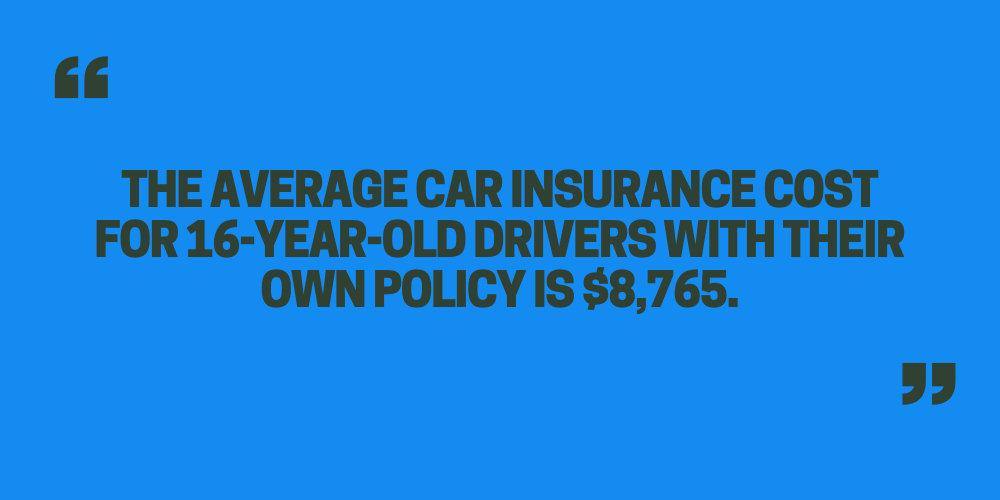Getting car insurance for a car not registered in your name might seem tricky, but it’s possible under certain circumstances. Sharing the road often means sharing cars, too. It would be best if you were insured whether you borrow a friend’s car for errands, drive a family member’s vehicle, or use someone else’s car for work. But what if your vehicle isn’t registered in your name? Can you still get insurance? Let’s discuss how to insure a vehicle that doesn’t belong to you.

Understanding Car Insurance Basics
Firstly, let’s grasp the basics of car insurance. Car insurance is a legal requirement in many places, designed to protect you financially in case of accidents, theft, or other damages to your vehicle or others’ property. It typically covers liability, collision, and comprehensive aspects.
In 2022, 14.0 percent of motorists, or about one in seven drivers, were uninsured, according to a 2023 study by the Insurance Research Council (IRC).
Can You Insure a Car Not in Your Name?
The short answer is yes, you can insure a car even if it’s not registered in your name. However, it largely depends on your relationship with the vehicle’s owner and the insurance company’s policies.
1. Ownership and Insurable Interest
Insurance companies require the person seeking insurance to have an “insurable interest” in the vehicle. Insurable interest means you would suffer financially if something happened to the car. While the car’s owner naturally has an insurable interest, others might as well. For instance:
- Family Members: If the car belongs to a family member, like a parent or spouse, you may have an insurable interest.
- Business Use: If the vehicle is used for business purposes and you’re responsible for it, you might qualify for insurance.
- Shared Ownership: In cases where you co-own the vehicle, you can insure it jointly.
2. Named Insured vs. Additional Driver
When you insure a car not in your name, you typically have two options:
- Named Insured: This means you’re listed as the primary policyholder. You’ll be responsible for payments and have full control over the policy.
- Additional Driver: In this scenario, you’re added to the owner’s insurance policy as an extra driver. While you can still drive the car and enjoy coverage, you won’t have control over the policy.
3. Permission and Consent
Whether you’re the named insured or an additional driver, it’s crucial to have the owner’s permission and consent. Insurance companies may ask for proof of consent to ensure the owner acknowledges and approves of you insuring the vehicle.
4. Insurance Company Policies
Each insurance company has its own set of policies and guidelines regarding insuring cars not registered in the policyholder’s name. Some may be more flexible than others, so shopping around and finding a provider willing to accommodate your situation is essential.
5. Legal Considerations
Before insuring a car not in your name, consider the legal implications. Ensure you comply with all local laws and regulations regarding insurance and vehicle ownership. Failure to do so could result in legal consequences and voiding of your insurance coverage.
Choosing the Right Option for Car Insurance
The best option depends on how often you drive the car and the type of coverage you need. Here’s a quick guide:
- Occasional Driving: If you borrow a car rarely, you might be covered by the owner’s insurance with permission.
- Frequent Driving: If you regularly drive someone else’s car, consider getting added as a driver on their policy or getting non-owner insurance.
- Shared Ownership: If you’re co-owning a car, becoming a co-insured driver is the way to go.
Important Reminders
- Always be upfront with your insurance company: Inform them that you don’t own the car you’ll be driving.
- Understand your coverage: Know what your policy covers (and doesn’t) to avoid surprises in case of an accident.
- Get everything in writing: If you rely on someone else’s insurance, get written confirmation of coverage when you’re listed as a driver.
Conclusion of Car Insurance
In conclusion, while getting car insurance for a vehicle not registered in your name is possible, it requires careful consideration of various factors. Ensure you have an insurable interest in the car, obtain the owner’s permission, and familiarize yourself with the insurance company’s policies. Doing so can financially protect yourself and the vehicle in case of unforeseen circumstances.
FAQs: Car Insurance on a Car Not In Your Name
1. What if I only borrow a car occasionally?
If it’s a rare occurrence, you might be covered by the owner’s insurance with their permission. It’s always best to double-check with them and confirm their policy extends to permissive drivers.
2. I drive a friend’s car regularly. What are my options?
- Get added as a driver: Your friend can add you as a named driver on their policy, extending coverage to you while driving their car. This might increase their premium, so discuss the cost beforehand.
- Get non-owner insurance: This separate policy provides liability coverage for accidents you cause while driving someone else’s car. It typically doesn’t cover damage to the borrowed car or yourself.
3. What’s the benefit of becoming a co-owner?
If you plan on sharing the car and driving duties long-term, becoming a co-owner allows you to be listed on the insurance policy alongside the other owner. This is a good option when you have a significant financial stake in the vehicle.
4. What do I need to consider before becoming a co-owner?
- Financial responsibility: Co-ownership involves shared costs like loan payments, maintenance, and insurance premiums. Be sure you’re comfortable with the financial commitment.
- Agreement: Discuss ownership terms, insurance responsibilities, and what happens if one owner wants to sell the car in the future.
5. Can I lie about how often I drive someone else’s car?
No. Providing false information to your insurance company can lead to policy cancellation and claim denials. Be honest about your driving habits to ensure you have proper coverage.
6. What if the car owner doesn’t want to add me to their policy?
If adding you increases their premium significantly, they might be hesitant. Explore non-owner insurance as an alternative, or consider finding another company with better rates for multi-driver policies.
7. Is there anything else I can do to save money on insurance?
- Maintaining a good driving record: Avoiding accidents and traffic violations lowers your premiums.
- Shop for quotes: Compare rates from different insurance companies to find the best deal.
- Increase your deductible: A higher deductible lowers your premium, but you’ll need to pay more out of pocket if you make a claim.
8. What happens if I get into an accident while driving a car not in my name?
As long as you’re covered by the owner’s insurance (as a named driver) or have your non-owner policy, the insurance should handle the claim according to the policy coverage.



